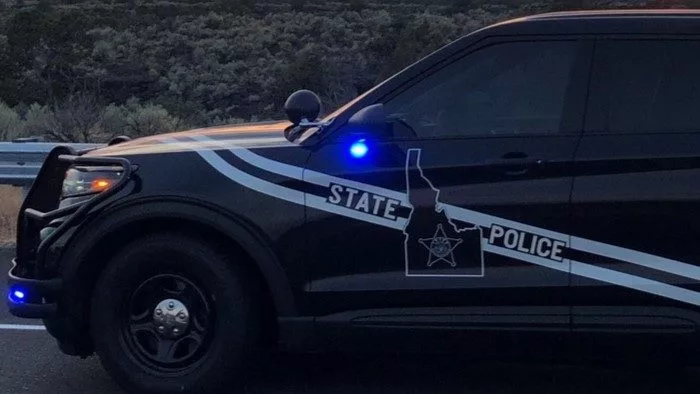BOISE – Fentanyl Takes All, Governor Brad Little’s informational media campaign, is growing awareness across the state about the prevalence and dangers of fentanyl, survey data shows.
The Idaho Behavioral Health Council heard an update on the campaign today from Drake Cooper, the Boise-based creative firm the state hired to run the campaign.
The State of Idaho launched the campaign in January when the Governor announced it during his State of the State and Budget address.
“Improved outreach, education, and awareness about the dangers of fentanyl is one part of our multipronged strategy to turn the tide on the deadliest drug our society has faced. I’m very pleased the first phase of the campaign is working so well to increase awareness about how fentanyl can truly take everything from you,” Governor Little said.
The first phase of the campaign was funded by Governor’s emergency funds. Opioid settlement funds for the second phase of the campaign were approved by the Idaho Legislature earlier this year.
Impressive reach from the campaign includes:
- Since the campaign launched, Fentanyl Takes All ads have been seen or heard more than 60 million times, the equivalent of 32 times per Idahoan.
- The website associated with the campaign, https://www.fentanyltakesall.org, has given concerned Idahoans a place to find more information on the dangers and accessibility of fentanyl. Nearly 80,000 Idahoans have visited the site during the campaign.
- All digital media campaign ads have performed well ahead of industry benchmarks.
The campaign targeted three main audiences – teens and young adults, parents and caregivers, and the general population.
The bulk of campaign dollars targeted teens and young adults. Idahoans aged 12-24 were targeted mainly through digital media ads on Instagram, YouTube, Snapchat, advanced TV, and streaming audio with messages that reinforced the deadly consequences of fentanyl. Other outreach methods utilized by the campaign included paid search and traditional media such as billboards, broadcast TV, broadcast radio, and PSAs on radio and TV.
Survey data shows the strategy to target young Idahoans with the messages is working. Survey work was completed at the start and end of the first phase of the campaign.
Key takeaways from the survey work include:
- Teens and young adults know more about fentanyl. Between November 2022 and May of 2023, the percentage of teens who say they know about fentanyl increased 22% and the percentage of young adults who say they know about fentanyl increased 20%.
- Teens and young adults are more concerned about fentanyl use among their age group. Between November 2022 and May of 2023, the percentage of teens who say they are concerned about fentanyl increased 16%, and the percentage of young adults who say they are concerned about fentanyl increased 23%.
- Teens and young adults are talking more about fentanyl. Between November 2022 and May of 2023, the percentage of teens who say they have had a conversation with their friends about fentanyl increased 14%, and the percentage of young adults who say they have had a conversation with their friends about fentanyl increased 12%.
- Teens, young adults, and parents are hearing more about fentanyl. In May of 2023 after months of ads running, 60% of teens, 83% of young adults, and 97% of parents say they had recently seen, read, or heard about fentanyl.
- Teens, young adults, and parents are learning most people use fentanyl by accident. Between November pf 2022 and May of 2023, the percentage of teens who recognize fentanyl use is accidental increased 3%, young adults increased 10%, and parents increased 8%.
- Teens, young adults, and parents all show increased awareness that 1 in 5 fake prescription pills contains fentanyl.
The campaign focused in part on the tragic stories of young Idahoans who lost their lives due to accidental fentanyl poisoning. The victims included 26-year-old Zachary Taylor of Lewiston, 15-year-old Michael Stabile of Coeur d’Alene, 29-year-old Rabon Peterson of Nampa, and 24-year-old Marigwen (Gwenny) Campbell of Boise, who all were killed by fentanyl.
“Idahoans are deeply appreciative of the families of Zachary, Michael, Rabon, and Marigwen for allowing us to share the tragic stories of their loved ones lost to fentanyl. We will continue to support them as they grieve their loss and do all we can to prevent more tragedies like theirs,”Governor Little said.
The campaign also created a media toolkit that is being used by schools, law enforcement, and community leaders across Idaho.
The actions the State of Idaho is taking to turn the tide in the fentanyl crisis include:
- The Fentanyl Takes All campaign to help educate and inform Idahoans, especially our youth and their parents, about the dangers of fentanyl.
- Idaho added more roadside testing equipment to help ISP get fentanyl off our streets more quickly.
- Idaho will add a new statewide drug interdiction team at ISP to intercept fentanyl coming into our state.
- Through Governor Little’s Operation Esto Perpetua, Idaho is improving information sharing between law enforcement, first responders, health care, tribes, coroners and others to tackle the problem strategically.
- Idaho is increasing resources for mental health and behavioral health to help prevent tragedy.
- Governor Little is working with border states to help reduce the supply of drugs coming into America across the open border from the drug cartels.




